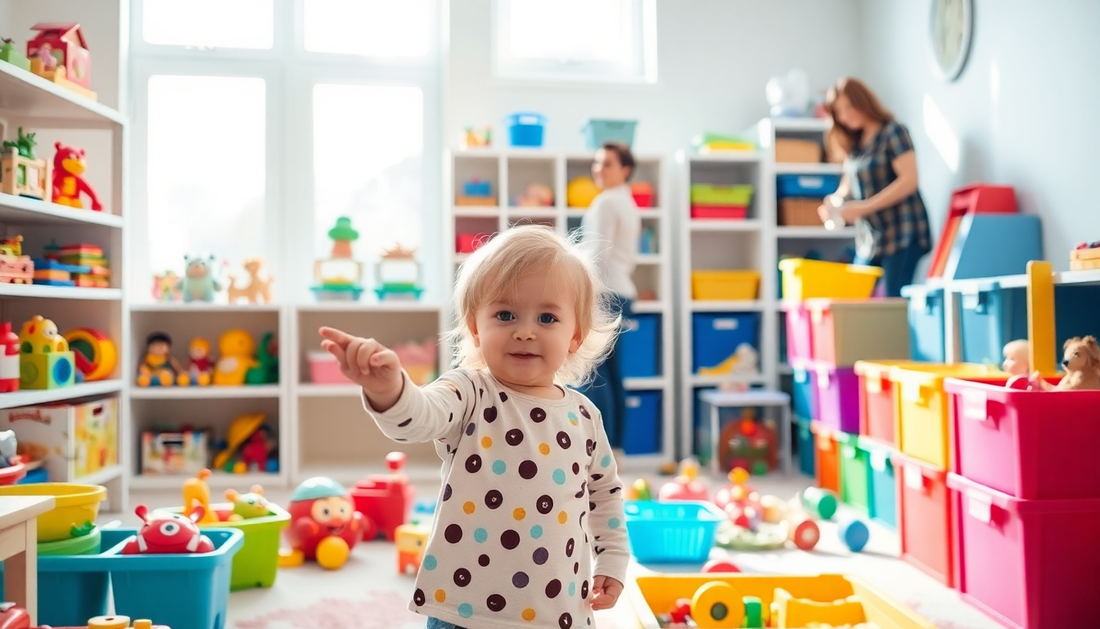As parents, we all want to provide our children with the best possible playtime experience. But let's be honest, keeping up with the ever-growing collection of toys can be a daunting task. That's where the magic of toy rotation comes into play! In this blog post, we'll explore how this simple yet effective strategy can help you maximize your child's playtime and keep them engaged and entertained.
The Importance of Toy Rotation
Imagine a room filled with toys, all vying for your child's attention. It can be overwhelming, and often, the sheer abundance of options can lead to boredom and disinterest. This is where toy rotation comes in. By regularly rotating the toys available to your child, you can create a sense of novelty and excitement, keeping them engaged and eager to play.
Avoiding Toy Burnout
When children have access to the same toys day in and day out, they can quickly become desensitized to them. Toy rotation helps prevent this "toy burnout" by introducing new and exciting playthings on a regular basis. This keeps your child's interest piqued and their imagination sparked, leading to more meaningful and enriching playtime.
Maximizing Developmental Benefits
Different toys offer different developmental benefits for your child. By rotating your toy selection, you can ensure that your little one is exposed to a diverse range of playthings that cater to their evolving needs and interests. This can support their cognitive, physical, and social-emotional growth in a more well-rounded way.
Decluttering and Organization
Toy rotation also has the added benefit of helping you maintain a tidy and organized living space. By regularly rotating toys in and out of circulation, you can keep the number of toys in your child's play area manageable, reducing clutter and making it easier to keep things clean and organized.
Implementing Toy Rotation
Now that you understand the benefits of toy rotation, let's dive into the practical steps to make it work for your family.
Assess Your Toy Collection
Start by taking a good look at the toys you have. Categorize them by type, age-appropriateness, and developmental benefits. This will help you identify which toys to rotate and when.
Create a Rotation Schedule
Decide on a rotation schedule that works best for your family. Some parents opt for a weekly or bi-weekly rotation, while others prefer a monthly approach. Experiment to find the cadence that keeps your child engaged and excited.
Rotate Toys Strategically
When it's time to rotate, carefully select a new set of toys that align with your child's current interests and developmental needs. Introduce these "new" toys with enthusiasm, and be sure to store the previous set in a designated area, out of sight and out of mind.
Involve Your Child
Engage your child in the toy rotation process. Allow them to help choose which toys to rotate in and out, and encourage them to rediscover old favorites as they reappear. This helps foster a sense of ownership and excitement around the process.
Rotate Selectively
Not all toys need to be rotated. Keep a few "anchor" toys that your child loves and plays with consistently. These can provide a sense of familiarity and comfort, while the rotating toys add the element of novelty.
The Benefits of Toy Rotation in Action
Implementing toy rotation in your household can have a profound impact on your child's playtime experience. Here are some real-life examples of how it can make a difference:
Increased Engagement and Creativity
When Samantha's parents started rotating her toys, they noticed a significant change in her playtime behavior. Instead of quickly losing interest in her toys, Samantha would spend more time engaged in imaginative play, creating elaborate stories and scenarios with the "new" toys.
Reduced Sibling Conflicts
The Jones family found that toy rotation helped minimize conflicts between their two children, Ethan and Lily. By ensuring that each child had access to a fresh set of toys during their playtime, they were less likely to fight over the same toys, leading to more harmonious interactions.
Expanded Developmental Opportunities
For young Lucas, toy rotation allowed his parents to introduce a wider variety of playthings that catered to his evolving needs. As he grew, they rotated in toys that challenged his fine motor skills, problem-solving abilities, and language development, ensuring that his playtime was always enriching and stimulating.
Conclusion
Toy rotation is a simple yet powerful tool that can transform your child's playtime experience. By introducing new and exciting toys on a regular basis, you can keep your little one engaged, foster their creativity, and support their overall development. So, embrace the power of toy rotation and unlock the full potential of your child's playtime!

